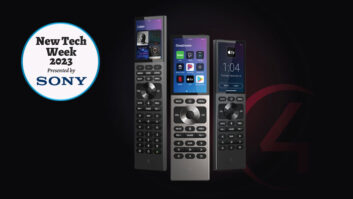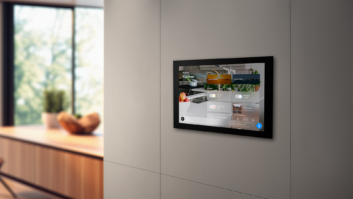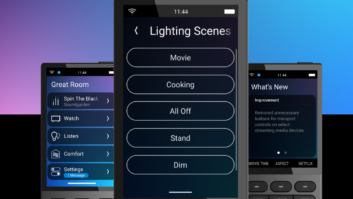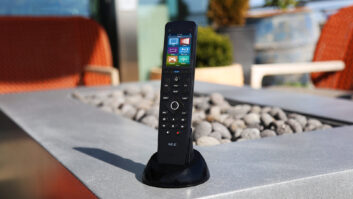After 41 years of walking this earth, I’ve come to learn a few things about myself. Deep, soul-searching things that come to define the man that I am today. Things like the knowledge that rapidly cramming down a ton of Taco Bell and hot sauce packets immediately before rushing off to do something physical results in bad — wicked bad — juju.
I’ve also learned things that I need to avoid in order to keep my anxiety, stress, and spleen rage to minimal levels. And much like I try and avoid the bile and agita that comes from walking through a Best Buy or Costco and overhearing their “experts” discussing technology, I know better than to read any of the “mass publications,” like Consumer Reports or the New York Times, for my tech advice.
However, one of my readers forwarded me an article the other day, knowing that it would goad me into a reply. Like a giant digital poking stick from way up north, this reader sent me an e-mail with the message, “Blog fodder? This article is ridiculous. It totally ignores our entire CEDIA industry.” Poke-poke! Attached was a link to a New York Times article titled “Universal Remotes: Not Remotely Possible.” Then with the modern equivalent of a stick-jab, he pressed SEND. And, well, being me, I have taken the bait. And now the hook is embedded, and the only way to extract it is to rant.
The article, written by a guy named Farhad Manjoo, begins with this magical, unicorn, and rainbow island query: “In an increasingly automated and connected world, wouldn’t it be wonderful if we could manage all our blinking machines from a single super controller?” It would be wonderful wouldn’t it? And turns out, it IS wonderful, because I’ve been installing — and using — single unified remote controllers for years. Apparently, though, Farhad has time traveled back to the mid-1980s where a $10 Sony Commander is one of the best things he can find. Farhad, I’m not even going to describe the crazy future world we live in now…a world where we have the internet…on computers…in your pocket!
Farhad’s apparent mission statement was to search the world of universal remotes — though he took that to mean more the microcosm of really basic and mostly super low-end models — and look for a single remote that can save “your coffee table and your brain [from becoming] more crowded than a Tokyo train at rush hour.” So after testing a variety of models ranging from what he describes as “cheap remotes, expensive remotes, smartphone remotes, and a few about which the less said, the better,” he says he doesn’t have good news to report.
He declares, “Some universal remotes are more useful than others, and one of them is almost pretty good, but in general these devices remain more appealing in theory than in practice.”
Really? Because let me tell you, Farhad, I have NO idea about your system. None. Don’t know what kind of gear you have or how it is connected or anything. But even with that handicap, I can PROMISE you, my system is WAY more complicated than yours. As in WAY. And before you read on, I’m happy to wager. Let’s count my components with remotes, shall we? Pioneer Elite Plasma (1), Marantz Projector (2), Panamorph anamorphic lens system (3), Draper motorized screen and masking system (4, 5), Marantz processor (6), Kaleidescape Blu-ray server (7), Pioneer Laser Disc (8), Yamaha CD (9), URC iPod Dock (10), Lutron lighting controller (11), and cable box with DVR (12).
So, not only do I have 12 potential remotes to contend with, I have TWO separate display systems. So my system has to handle switching between watching the plasma or watching the projector — and turning the other one off — and switching, where the Marantz processor routes the video.
Farhad claims that remotes “all suffer from an inherent, usually fatal flaw: universal remotes cannot possibly offer enough buttons to mimic all functions of all devices, so they usually have to make compromises, cutting out buttons here and there. The trouble is, some of those buttons are important.”
Again, really? Because I can tell you exactly how many times I need to go back and pick up one of my 12 original factory remotes: Zero. That’s the sum total number of times I need to go running for another button. I’m not even sure where some of my old remotes are. Probably in a drawer somewhere leaking battery acid on themselves or maybe they’ve started a self-help group where they hold meetings and discuss what it’s like to be unused, unneeded and unloved.
Farhard’s favorite remote in his roundup was the Logitech Harmony One. Now, granted, I think this is a pretty good remote as well, but it is not in any way worthy of the lumped on “the Mercedes-Benz of universal remotes” praise that Farhad bestows on it. And, at $170 it is not “expensive” and certainly not Benzo level. Compared to the $10 and $20 models he looked at, yes. But even in the Harmony line-up, it’s not the top of the line. I’d say the ONE is more like a decent, middle-of-the-road model Kia or Hyundai.
But even the Harmony fell from grace. “One persistent problem was the occasional omission of an important step in an Activity — in trying to set up my system to listen to music, say, it might forget to set the television’s input to my CD player, or it might turn my TV off instead of on…for all its sophistication, the Harmony exhibited the same flaw I found with every other remote: it lacked certain significant functions for each of my devices.”
In testing a couple of remotes from remote uber producer URC — a $20 and a $90 model, by the way, from a company whose line-up goes to the $1,500 price point, so uh, so much for your little $170 Mercedes comment, Farhad says, “The R50 includes another feature found on several high-end remotes: macros. These allow you to press one button and have the remote perform a series of actions automatically…Unfortunately, I found it too much of a hassle to set up these macros.”
So, again, because YOU couldn’t figure out how to adequately program and set up the remote, it’s the remote’s fault? “Look remote! You’re making me hit you! I don’t want to, but I want you to know this is ALL your fault! Smack!” Sounds like you’ve got lame tech skills.
OK, enough. Here’s the problem. On top of disappointing his parents with his lack of tech and programming skills, Farhad clearly doesn’t know this industry. To dismiss ALL universal remote controls because you tried a total of four — FOUR! — models is ludicrous. And, the four models he tried — including a $10 and $20 model — had an average price of $72.50. That is kinda the equivalent of saying, “I drove a Yugo, a Pinto, a Tata Nano, and the Adobe (that sassy new Mexican import that’s made out of clay!), and I’m here to tell you that cars are small, cramped, catch on fire in any kind of minor collision and lack any kind of get up and go! Stay away from cars!”
So if Farhad’s article had instead been titled, “Buying a cheap, piece of garbage remote that you try and program yourself results in a totally lame experience! Instead, save your money, buy a ‘real’ remote and have it professionally programmed!” I’d be like, “Rock on, Farhad! You get it, bro! Now, let’s go drink some beers!” But instead, he lumps ALL universal remote controls under the moth-eaten, smallpox infested blanket. Then he equates his lame decision to look at four low-end models and then write-off the entire universal remote category with… journalism.
Here is the solution to all of your and Farhad’s problems:

This is my remote, a URC MX-980 with an MSC-400 system controller. This package is $1,200. Expensive? Sure. And in an era where many people are purchasing TVs that cost under $1000 and a matching sound bar that is $399, a $1,200 remote control system might very well seem egregious. But it is a small percentage of the overall system price and allows me — and everyone else in my family — to thoroughly use and enjoy the system ever day. And it totally works. It’s bulletproof.
I can hand the remote to anyone, and it takes me about one minute of instruction to explain to guests — and these guests include my mom who is baffled by the procedure to retrieve a text message — how to use my near six-figure system. ONE MINUTE! Know who else has mastered using my system? My four-year-old daughter. The system senses the power draw of components and “knows” when something is off when it should be on and vice versa. I press one button, and magic happens. Lights drop, screens drop, lenses slide into place and movies start playing. One button. And it works. Every time. (“But it doesn’t have a ‘help’ button.” So. “But, what if I need help?” Why would you need help? “Well, what if something doesn’t work?” See, you’re missing the point. It works. Always. Every time. If you can accurately press a large button labeled “Watch Kaleidescape Blu-ray,” then you will be rewarded with a Kaleidescape Blu-ray movie. You won’t need help. Trust me.)
Part of that is the remote. OK, maybe a large part. (And the MSC-400, which is a rockin’ base station, receiving radio frequency triggers and turning them into real world “Daddy needs to watch a movie!” magic.) And the other part is that I know what the hell I’m doing with the programming. You think I’m just gonna jump into a F458 and suddenly be driving like Michael Schumacher? Sadly, no. I’m going to immediately jam on the gas, the car is going to powerslide sideways, and then it is going to smash into a barrier. Then am I going to blame Ferrari for making a lame car? Yes. But that won’t be right. Programming a smart remote is kind of the same thing. Except you *probably* won’t spin out of control, kill a family in a minivan, and toast a $300,000 piece of Italian art.
Universal remote controls are sophisticated and to get the most out of them, you need to hire a professional who knows how to properly program it. And you can find a ton of professionals over a place called CEDIA. (I’ll even help you out; it’s www.cedia.net) Programming remotes and getting stuff to work right every time is a big part of what these guys do. Just don’t expect them to recommend anything that has $10 in the price. Well, maybe some replacement batteries.
So, Farhad, if you *really* want to solve your remote control problem, shoot me an e-mail. We’ll talk. And then we can get that beer. PS: You’re buying…







